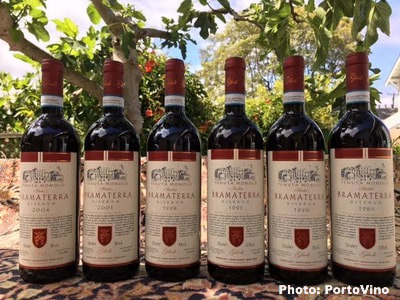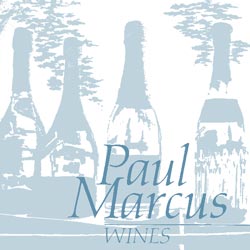
The Producer
I recently had the opportunity to taste several older vintages of Bramaterra Riservas from Umberto Dilodi of Tenuta Monolo, thanks to PortoVino importers. The tasting was held at the Kebabery in Oakland, and sure enough, Kebabs and aged Bramaterra Riservas are a stellar match!
The DOC of Bramaterra borders Gattinara and Lessona in Alto Piemonte. This particular DOC has a unique terroir in that it is less exposed to wind, coming predominantly from the north, and is composed of both volcanic and marine soils. Spanna (Nebbiolo), Vespolina, Croatina, and Uva Rara grapes are typically grown in the region. Since the climate here is cooler, the tannins of Spanna generally do not ripen to the same extent as its neighbors, and so instead it is often blended with the other grapes grown. As a result, the wines are known for their freshness, as well as balance and power.
More than likely though, Umberto’s wines haven’t shown up yet on your or other Piedmont enthusiasts radars, since they were never released to the market. In fact, Umberto made the decision to not sell his wines in order to avoid a conflict of interest while he was an integral part of elevating the region to its DOC status in the late 1970’s. Unfortunately, with Umberto’s passing, the winery operations came to an end. However, PortoVino has brought new life back to the winery by acquiring the entire cellar, and provides further insight into the winery below:
Origins
The Tenuta Monolo cantina was once part of a villa that contained over 40,000 volumes of manuscripts and books on philosophy, classical music (especially Baroque and Renaissance), and art. Surrounded by three-quarters of a hectare of vineyards, the villa was home to the eccentric musician Umberto Gilodi and his life-long friend, cellar-master, painter and engraver Orlando Cremonini.The two men lived a simple life. All farming was organic; Umberto Gilodi was a meticulous note-taker, and we have his documents that attest to not using pesticides or herbicides in a time when most in that area were. Fermentation was in large wooden botti with native yeasts. The vineyards, and so too probably the wines, were 60% Nebbiolo, 20% Croatina, 10% Vespolina, and 10% Uva Rara. The vineyard and cellar were followed by the famous Italian wine professor from Torino’s Enology School, Professor Italo Eynard.”
The Wines
 These wines were properly cellared in Rome after Umberto’s passing. Paul Marcus Wines is excited to be able to share the following stellar and rare line-up of aged Bramaterra with you:
These wines were properly cellared in Rome after Umberto’s passing. Paul Marcus Wines is excited to be able to share the following stellar and rare line-up of aged Bramaterra with you:
2004 Bramaterra Riserva $49.00 (In-stock)
Supple and gentle on the palate, with a nice lift of acidity and good length. Great combination of tertiary aromas, including white pepper, cherry, and roses. Perfect to drink now.
2001 Bramaterra Riserva $70.00 (In-Stock)
More structure and tannin, and a bit more rustic in character, with predominately meaty, spicy, and floral notes.
1996 Bramaterra Riserva $66.00 (In-Stock)
My favorite based on its high acidity, fine tannins, and detailed spice notes. I particularly enjoyed its energy and precision.
1991 Bramaterra Riserva $66.00 (2018 Arrival)
The earthiest of the bunch, showing less floral character and more dusty mushroom and savory tomato notes. Also with less acidity than the ’96 so the wine is lovely and gentle on the palate. Do expect to find sediment, and as such we highly recommend decanting this wine.
1990 Bramaterra Riserva $56.00 (2018 Arrival)
Moving towards tertiary aromas and flavors. You will find rustic woodsy, wool, and meaty character on the nose, in addition to salty flavors. This wine expresses the vintage, which on the whole was a bit warmer, with a heartier and tannic palate. This would be outstanding paired with grilled steak or kebabs.
1985 Bramaterra Riserva $85.00 (In-Stock and Limited Quantities)
Absolutely lovely, lighter-bodied, and etherial. Quite simply a pleasure to drink.
